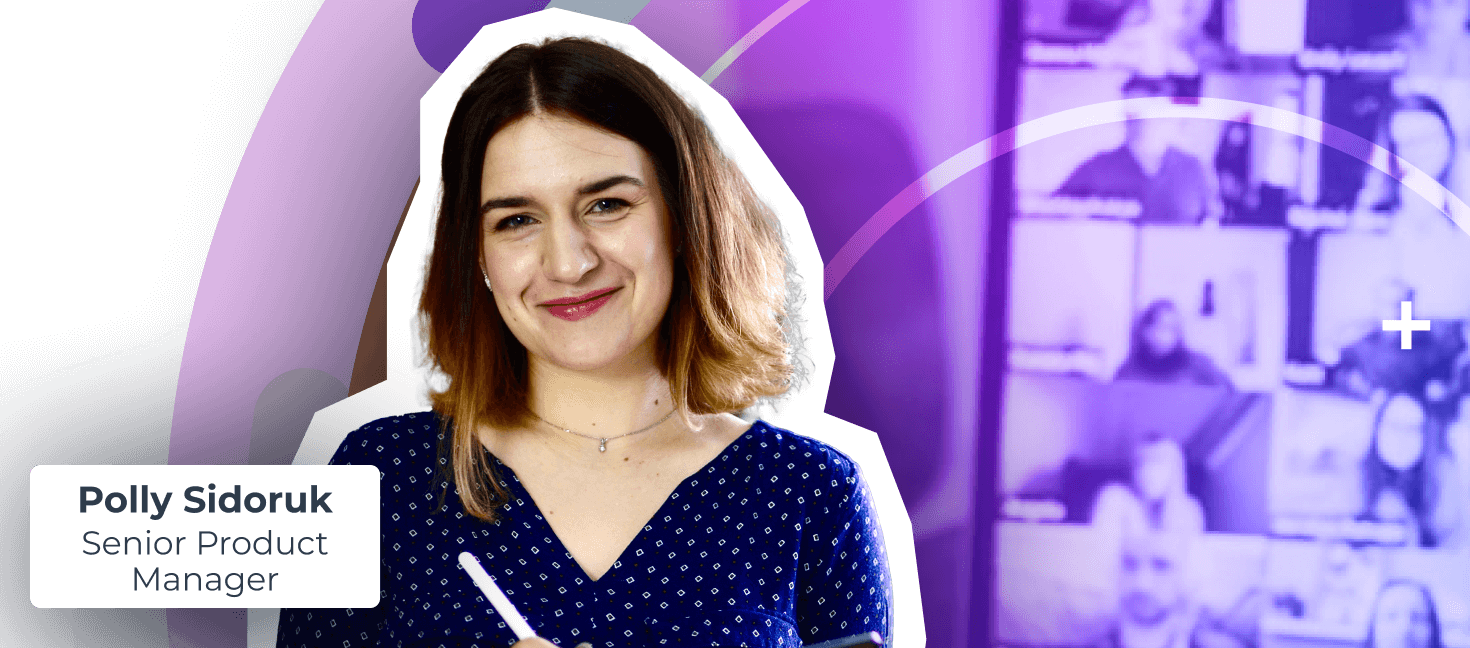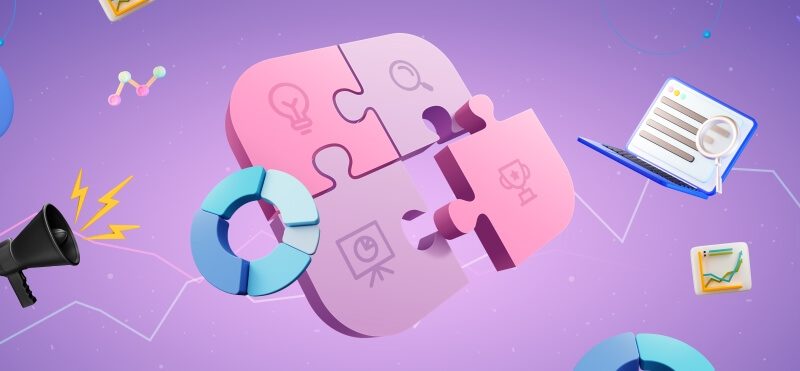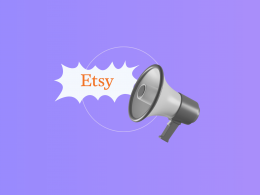SaaS is a specific business model, standing aside from other businesses. This way, it requires a different approach to sales efficiency. There are things that are specific to this industry, so if you’re a starting SaaS business, you might want to consider peculiarities about selling SaaS products.
In this article, we’re sharing some actionable ways to be effective in SaaS sales.
Here’s what you’ll read below about SaaS sales:
2. How do SaaS sales differ from other business selling?
- Understanding the SaaS sales model
- Important SaaS sales metrics to track
- Biggest challenges SaaS sales reps face
3. 7 tips for effective SaaS sales
What is SaaS?
It’s good to start with a definition. Even though SaaS has been around for a while, it’s still often necessary to define it to customers.
SaaS stands for software as a service. It’s a software that is being hosted, secured, and managed by a single provider. It’s easily accessible online, customizable, and comes with its own product engineers and customer success team that are there to serve the users and support the product.
How do SaaS sales differ from other business selling?
SaaS sales imply selling web-based software to potential users. As the SaaS business model is pretty peculiar, selling SaaS can differ from other business selling and require a different approach. Working in SaaS sales might include, for example, constantly looking at acquiring new customers and upselling to or retaining current ones. But let’s drill into the difference.
Understanding the SaaS sales model
Generally, three sales models are typical for the SaaS industry based on your product complexity and customer profile. They include transactional sales, customer self-service, and enterprise sales. Understanding your SaaS sales model can help you determine your sales strategy, the necessity of having a full-scale sales department, the number of sales reps, and other factors that can help you set up your sales process.
- Transactional selling aims at making quick sales and is most common for selling software to small and medium businesses. Competitive pricing and discounted offers usually work well for this type of sales, but often, they imply phone or in-person interaction. The goal is to sell software to as many customers as possible. This way, selling cycles are shorter. However, your sales reps might need the training to make the most of transactional sales, which is much easier to do with sales training software.
- The customer self-service model is typical for selling a high volume of products at a lower price. Think of various subscriptions, such as Spotify, Netflix, etc., and you’ll understand what we mean. Usually, this type of sales doesn’t require having a team of sales reps. Freemium and free trials work best to close sales here, and usually, it happens online.
- Enterprise sales are the common model for selling small numbers of software at higher prices. This model is more typical for SaaS businesses offering complex products for mid to enterprise-level companies. Sales reps need to be extremely knowledgeable of the product value, and often, it takes the joint forces of the salespeople, marketing, and product team to close the deal. Selling cycles can be quite lengthy here.
Important SaaS sales metrics to track
To better understand how well your sales work for your SaaS business, it’s critical to know what to track to measure success. There are some essential metrics and KPI that every SaaS entrepreneur and sales team should consider. They give an overview of how well the business performs, and provide insights into what to improve. Of course, the whole scope of the metrics to track might differ from business to business, but here are the most critical SaaS sales metrics:
- Churn Rate
- Monthly Recurring Revenue (MRR)
- Revenue Churn
- Annual recurring revenue (ARR)
- Committed Monthly Recurring Revenue (CMRR)
- Cash
- Customer Acquisition Cost (CAC)
- Customer Lifetime Value (CLV)
Biggest challenges SaaS sales reps face
Selling SaaS, just like every business model, comes with unique challenges that can block sales. At this point, understanding what hampers your sales can be the first step to skyrocketing your SaaS sales efficiency. Many can depend on the SaaS sales model you choose, but the three challenges most SaaS reps typically face are as follows:
Competition
Today’s software market is saturated – you can literally find an app for everything. This way, standing out from the competition can be challenging. Sales reps might need to train not just to be skilled in sales but also to understand the value the product offers and communicate this value to businesses.
Wrong audience
You can’t be effective at sales without having quality leads. However, for SaaS businesses, especially startups, outlining the perfect customer profile from the very first try can be hard. So sales reps might need to struggle with unqualified leads that they won’t be able to turn into customers. Moreover, targeting an audience that doesn’t fit you to the fullest often increases churn.
Bringing customers from a free trial to purchasing
SaaS often features lengthy sales cycles. It’s all the more frustrating when customers leave at the last stage and, having tried the product, don’t proceed to purchase. They can do it for many reasons: from realizing that the product doesn’t answer their needs to finding it not affordable. Thus, finding out what makes them leave can tremendously help improve the sales process.
8 tips for effective Saas sales
We gathered eight actionable tips that help overcome these and other challenges of selling SaaS products.
Automate your business
Business automation can help reduce costs by improving accuracy and increasing productivity. Software can be used to automate mundane tasks such as data entry, record keeping, and customer service, freeing up your time to focus on more important tasks.
All in all, business automation can be a great tool for businesses looking to stay organized, save time, and increase their revenues. It can be a great way to give your business the edge it needs to stay ahead of the competition.
Synder is a perfect example of a business automation tool aimed to help SaaS businesses track and manage their accounting. Get accurate P&L and revenue reports, up-to-date balance sheets, customer and product reports, track your fees and invoices, classify transactions, and much more! If you have questions, contact our specialists and solve your queries. You can also try everything yourself – create a free account (no credit card required), and see how the software works.
Invest in your SaaS product
One thing is clear here: you are your own biggest helper and it’s completely up to you how much your customers will be spending on your solutions. A beautiful thing about SaaS sales is the control you have. It’s up to you to create and keep adding new features that answer a real need your customers have and it’s also up to you to hire and train a team of excellent support specialists who will be able to guide your users every step of the way.
Aggressive sales aren’t necessary when you have great features and reliable support. And even more to that extent – you can keep adding useful features and especially if it’s based on the feedback your support gathers on the ground, it’ll be met positively, and your customers will be happy to upgrade, because they’ll see the actual value for themselves. That’s why probably the most important tip is to invest in your product and never stop doing that so that what you offer is filled with helpful features, and your customers are accompanied by a professional success team that knows every single feature better than the back of their hand and can show your customers how to extract real value from your product to the fullest potential.
Metrics are your sales friends
A keyword in SaaS sales is tracking. Tracking visitors, trials, subscribers to your newsletters, conversion rates, and much more. The main goal is of course to eventually improve those metrics. As in many SaaS companies, this data is managed by the marketing team, so it’s very important to keep sales and marketing teams in very close collaboration. Marketing reps can contribute to the planning by providing insights on overall trends while salespeople will be very familiar with what’s happening in the field, they’ll have a very good feel of individual trends. Marrying the two is crucial.
Another source of data is your product itself. Rather than going with identical scripts and automated emails, studying and creating email campaigns based on marketing metrics and product data such as individual usage limits, nearing expiration date, inactivity, high activity, will let you know when an existing customer might be interested in a premium plan.
Short term relationships cannot provide long-lasting results
It’s not easy to stay in touch with your online customers. It isn’t impossible though. It means that as opposed to those selling face-to-face, SaaS reps will have to have killer communication skills on all fronts: email, calls, and in-person too (or did you forget about all the fun SaaS conferences?).
These skills are imperative in order to create long-lasting relationships with your clients. As we’ve already seen that profit depends on upselling, it’s clear why long-lasting partnerships are important. It also means that your product needs to be so good that people will want to use it and invest in it.
Once you’ve established a loyal customer base, every time you introduce new add-ons it’ll be easier to immediately test them and receive real feedback and also immediately sell them.
The next step is referrals and testimonials. At some point you might even consider a referral program for the most loyal among your customers, to work for you while you’re working for them and bring more customers into the pool.
Say no to competitive pricing and yes to competitive value
Some of these tips are intuitively understood and some not so much. This one definitely belongs to the second category. It all boils down to one thing, essentially: if you’ve never lost customers because you’re too expensive, you’re probably too cheap!
Your users will be happy to pay for a service that solves their actual pain point, so it’s just as important for them as it’s for you to make sure you’re doing well and you’re not going to shut down tomorrow leaving them on their own with their problems.
If you do get those complaints, it’s tempting to give in and want to lower your prices, but the answer is usually not that your prices are too high, it’s that your value isn’t good enough. And the good news is that you can address it! You have a developer team that can make sure that your product answers the real needs people face.
Offer short, on-point demos
SaaS sales is a long process. Actually, it never stops since your customer is there, with you, online, and there’s always a possibility to upsell. But that’s not the whole story. It’s very important to have a sound education process going on because SaaS products aren’t generally known as being an easy thing to use. You’ll want to offer demo sessions to your customers in order to teach them how to use the product, feel comfortable with it, be less dependent on the support and feel backed at the same time.
In order to achieve it, one of the best tools is a very clear, on-point demo, that could be offered to every new client. Depending on your size, you can decide whether to offer free individual demos, paid individual demos, or free group demos (webinars), where either only existing, or both existing and potential customers could learn all the major features of your product and become confident users.
The on-boarding process needs a lot of thought
Instinctively, you probably know that onboarding is important. But factually, do you know why? We’re here to shed some light on it. Think of a time when you joined a gym only to stop going after a month and cancel your membership after 2 or 3 months of hating yourself for having little motivation. Now think about how it can be translated into a software sales scenario. It’s likely that if you have a good initial acquisition process, many people will be signing up for trials and even buying subscriptions. But how to make sure they stay and all the cost of acquisition doesn’t go to waste? You need to make sure people understand your product. The complexity of the onboarding process will depend on the complexity of your product. It can be done in one email or call if the product is pretty simple or could mean demo-sessions for new customers, or even an entire cycle of a combination of emails, calls, good feedback generation, demos and webinars for the particularly complex products.
Talking to churned customers is paramount to success
Churning means canceling subscriptions. It’s a common process (most small SaaS businesses tend to have a monthly churn rate of 5-10% according to the 2016 SaaS Metrics Report by Totango). Yet many Saas businesses don’t have a specific process to track and contact churned customers.
Here’s why it’s important.
If you can keep your customers for longer, it’ll bring a consistent increase in revenue without having to generate more leads and spend more money on acquisition. A high churn rate drives up acquisition costs and hurts the customer lifetime value. It indicates that your service isn’t responding to customer needs, and could require further development. Hiring more support or adding new features drives up the running costs as well.
Those companies that have a process of tackling churned customers often use automated emails to do it. But it’s highly likely that customers that quit won’t be responding to your emails, and even if they will, their reasons could be vague and lead you nowhere. Calling a customer could bring in more answers, as well as enhancing your emailing system and taking into consideration the possible specific reasons why this or that customer could have quit with real offers of what they might get if they come back.
In short, whatever you can do to keep the churn rate consistently lower will bring in more reliability and better cash flow to your business.
Effective SaaS sales: key takeaways:
SaaS sales can be challenging, no matter how complex a product you sell is. Failing to understand who your customers are, their pain points, and your product’s value for them can drastically hamper your sails. At this point, tracking and analyzing many important SaaS sales metrics might help. And above it, the history of your communication with customers will allow you to fill in the gap between what problems you think your customers have and what your product can solve, and what they are in reality. Hopefully, these tips will give you some clues on how to bring your SaaS sales to new heights.






![How to Use Afterpay on Amazon: Can You Use Afterpay on Amazon [A Using Afterpay Guide]](https://synder.com/blog/wp-content/uploads/sites/5/2023/05/how-to-use-afterpay-on-amazon-260x195.png)